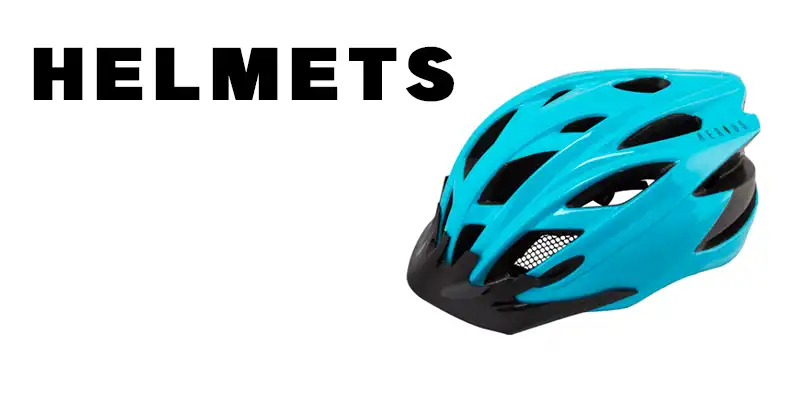

How to Select a Helmet For Your Recumbent Tricycle
Published on 05/15/2025
Riding a recumbent tricycle offers a comfortable, stable, and low impact way to enjoy cycling, but it also introduces some unique considerations for rider safety. Chief among these is choosing the right helmet. While any properly certified bicycle helmet is better than none, the best helmet for recumbent trike riders is one that matches the riding posture, speed, and environment typical of three wheeled cycling.
In this guide, we'll walk you through everything you need to know about selecting a helmet that provides maximum protection and comfort while riding your recumbent trike.
Why Helmets Matter - Even on a Trike
Some recumbent riders believe a helmet isnft as necessary on a trike because of the lower center of gravity and stability that eliminates the risk of falling sideways. While itfs true that tipping over is rare on a well designed trike, helmets arenft just about falls, theyfre about head protection in the event of collisions, rollovers, or impacts from behind.
Accidents involving distracted drivers, obstacles on the road, or emergency stops can happen just as easily on a trike as on a standard bicycle. A helmet helps reduce the risk of traumatic brain injuries, facial damage, and skull fractures.
Unique Helmet Considerations for Recumbent Riders
Because you ride in a reclined position, your headfs orientation and exposure differ from upright cycling. Herefs what makes helmet selection for recumbent riders slightly different:
Rear Protection Is More Important: Since your head is tilted back, impacts from behind and above are more likely. A helmet that extends lower at the back provides better coverage.
Ventilation in the Rear Matters More: You wonft benefit as much from top-down airflow. Choose a helmet with good rear and side ventilation.
Visors Can Block Your View: On a trike, youfre typically looking up, not down. Helmets with large, fixed visors can obstruct vision.
Neck Support and Fit: Because your head is supported by a headrest in some setups, a bulky helmet or poor fit can cause discomfort on long rides.
Key Features to Look For
Safety Certifications
The most important requirement for any helmet is that it meets recognized safety standards. Look for certifications such as:
CPSC (Consumer Product Safety Commission – required for all U.S. bike helmets)
EN 1078 (European standard)
ASTM F1447 (optional U.S. standard for cycling helmets)
Avoid novelty helmets or uncertified products - even if they look sturdy. Certification ensures a helmet has been tested under impact conditions.
Extended Rear Coverage
Look for helmets with additional protection at the back of the head. Many urban or commuter helmets (like the Giro Caden or Bell Annex) feature this design and are excellent for recumbent use.
Adjustable Fit Systems
A helmet should sit snugly without pressure points. Modern helmets use dial-adjust systems that let you fine-tune the fit with one hand. The better the fit, the more effective the helmet will be in an accident.
Ventilation That Matches Your Posture
Because recumbent riders donft lean forward, traditional top vents are less effective. Look for helmets with larger rear-facing vents and side channels that allow cross-ventilation.
Lightweight Design
Weight becomes more noticeable during long rides, especially on your neck and upper spine. Aim for helmets under 300g (grams) for comfort on extended tours.
MIPS or Rotational Impact Protection
MIPS (Multi-directional Impact Protection System) is a low-friction layer inside the helmet that reduces rotational forces on the brain during angled impacts. Itfs a worthwhile feature that adds an extra layer of safety.
Should You Use a Helmet With a Visor?
Visors are helpful for upright cyclists who want to block sunlight or rain. However, on a recumbent trike, a visor can actually impair visibility—especially if youfre in a reclined seat with your head angled upward.
If you ride in bright or sunny areas, consider:
Detachable visors that can be removed when not needed
Cycling glasses or photochromic lenses for sun protection
Helmet shades that attach underneath or behind the helmet rather than on top
Visibility and Helmet Accessories
Your helmet can also serve as a mounting point for safety gear. Consider:
Helmet-mounted mirrors for enhanced rear visibility
Clip-on LED lights for night riding
Reflective decals or tape to increase visibility from all angles
These accessories are especially helpful for trike riders, where lighting and eye contact with traffic are more difficult due to the reclined position.
Final Tips for Choosing a Helmet
Try Before You Buy: If possible, test the helmet while seated on your trike. Pay attention to your neck angle and line of sight.
Replace After Impact: Helmets are single-impact safety devices. Replace yours after any crash—even if therefs no visible damage.
Upgrade Every 5 Years: Materials degrade over time, and newer models may offer better protection.
Finding the Right Helmet
Selecting the right helmet for your recumbent tricycle isnft just about meeting basic safety standards—itfs about finding a fit that aligns with how you ride. Rear coverage, airflow direction, and comfort take on new importance when youfre seated low and reclined. With so many high-quality helmets now designed for diverse riding positions, therefs no excuse not to wear one.
Start your search with commuter-style helmets or MIPS-equipped road models, and always prioritize certified protection over style. Remember, a properly fitted helmet can make all the difference in an emergency—and it ensures every ride is safer and more enjoyable.




